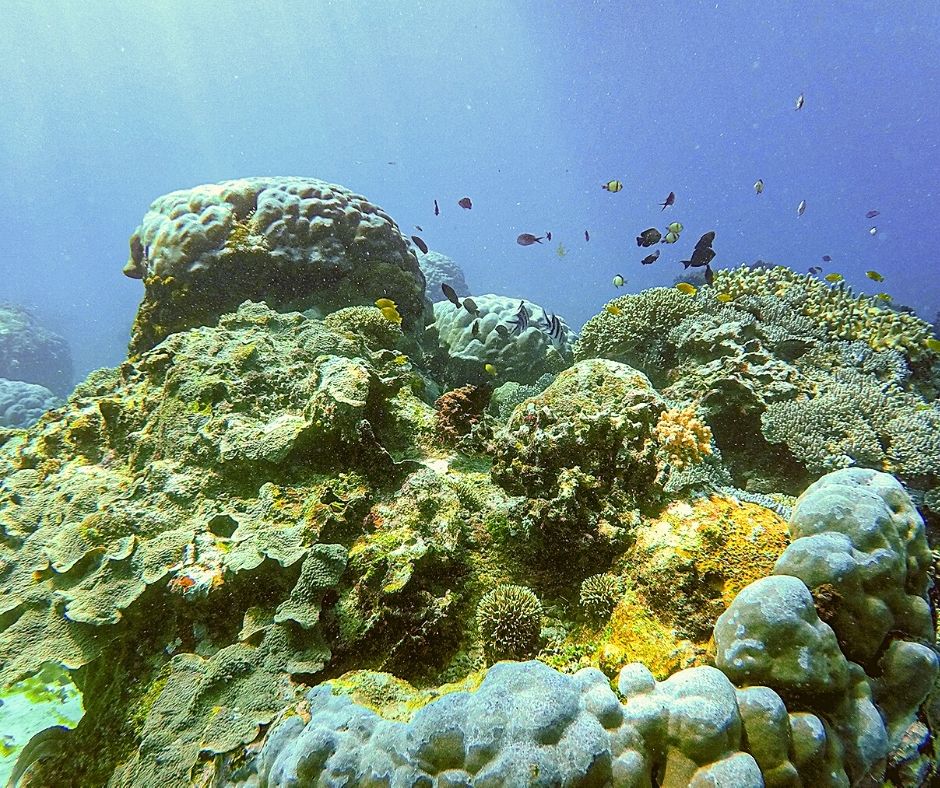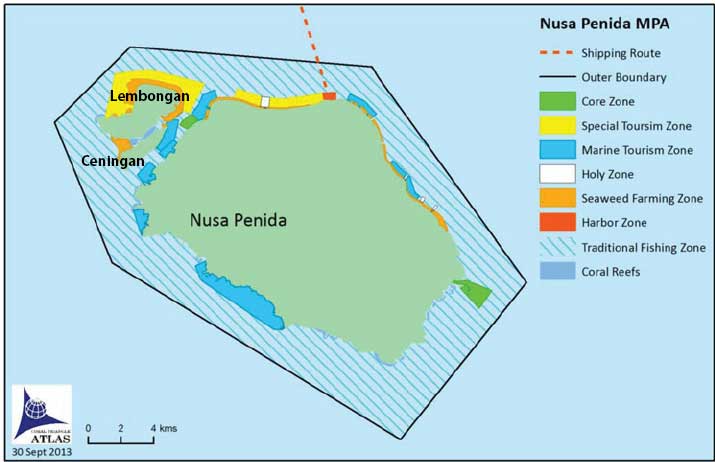We are very lucky to call the Penida Marine Protected Area home. The beautiful Nusa Islands off the southeast coast of Bali are truly a sight to see. They consist of impressive rocky shorelines and a great richness of marine life. In fact, they are host to 576 fish species and 296 coral species. Furthermore, this accounts for the 5 species that were previously undiscovered! In total, the area covers 20,057 hectares and helps sustain more than 48,000 people in 56 traditional villages. Read More
PENIDA MARINE PROTECTED AREA CONSERVATION

As a partner of the Coral Triangle Center, we have been defending and supporting the development of the Marine Park Area of Nusa Penida. When this sanctuary was identified as a critical zone for marine biodiversity, the representatives of CTC worked hard together to develop a zoning system that we applied with a management plan. Nowadays, we continue our efforts by conducting annual reef health, resource monitoring, and regular patrols to maintain the Nusa Penida MPA Management Unit.

Reef Health Monitoring
The area is closely monitored throughout the entire year. Furthermore, the partnership of the CTC, local government, and the private sector create an annual report. Through that report, we are able to better understand how to properly manage and protect the area. Furthermore, adaptability is very important to more efficiently manage threats. Moreover, transparency between departments is critical. Regular community meetings make sure of this.
Community Conservation Projects
The local communities recognize the strong economic benefits generated by conservation. The CTC regularly trains local groups on how to sustainably manage the area. Furthermore, tourists often join in on projects to improve the area. Through community interest, crucial habitats such as the mangrove area have grown in protection size by 30 hectares.


Sustainable Tourism
By recognizing “good tourism”, the CTC allows generations beyond to reap the benefits from the MPA. They do so by working with local tourism operators in raising awareness in regard to the zoning system. Furthermore, the Sunfish and Manta Ray Interaction Code of Conduct governs the way we interact with these spectacular creatures. Lastly, they cooperate with Green Fins to ensure that local operators act in a very environmentally friendly manner.
Field Learning Site
The area represents a great place for people to learn about conservation. MPA is a great training platform. This includes students, communities, groups, NGOs, and government officials. We are lucky that many groups have chosen this site as a learning ground. Therefore, the discipline of MPA management will mature. This improved understanding will also improve the management of other MPAs around the world.

PENIDA MARINE PROTECTED AREA CODE OF CONDUCT
During summer 2016, some divers saw a wounded whale shark and reported it to the local authority, leading to the Coral Triangle Center. The pelagic was deadly injured by a boat propeller within the Nusa Penida Marine Protected Area. Consecutively, the representatives from CTC, the Ministry of Marine Affairs and Fisheries were reunited to discuss a new measure and try to prevent a similar incident from happening in the future.
As a result, all boat operators and dive center received a “Code of conduct” on interaction with marine animals, such as sunfish (Mola), Manta rays and Whale sharks. In the long run, we hope that better awareness will be spread amongst divers and snorkelers on how to interact properly with marine life.
PENIDA MARINE PROTECTED AREA ZONING

There are 6 main zones in the MPA:
-
Core zone: this area holds the highest level of protection. Therefore it is completely closed to fishing and tourism purposes. You may only access this area for scientific reasons.
-
Traditional fishery zone: this area is available for fishing only to locals to support their livelihoods. This reduces the strain on the area while maintaining a healthy relationship with the environment.
- Harbor zones: essential for getting supplies shipped from Bali.
- Sacred zones: Respecting local customs is very important. They are of cultural importance to the communities on these islands.
-
Seaweed farming zones: seaweed farming is a traditional means of sustenance. It is possible to learn more about these local practices. Ask for a seaweed farming tour.
-
Marine tourism zone: these are the areas you will be visiting. Fishing is not allowed here. It is a diver or snorkeler’s paradise though!
